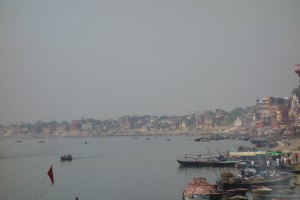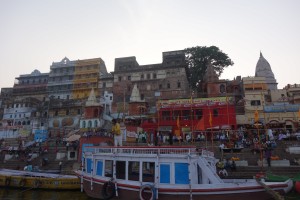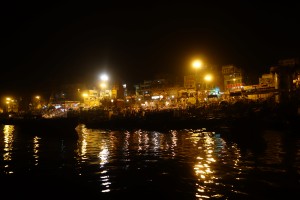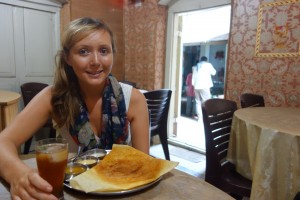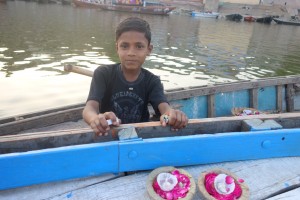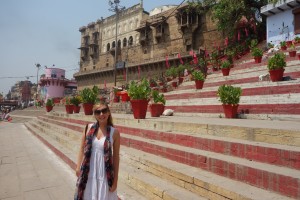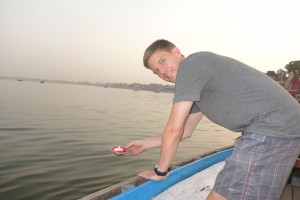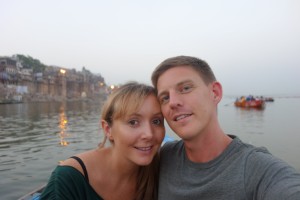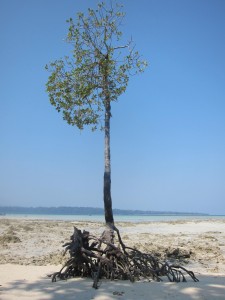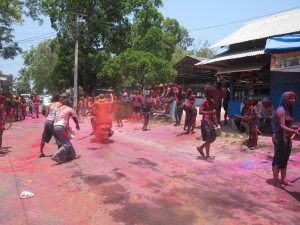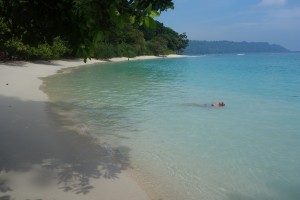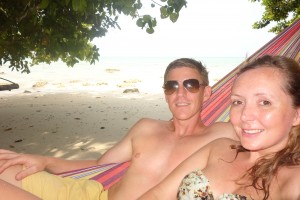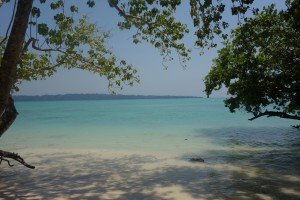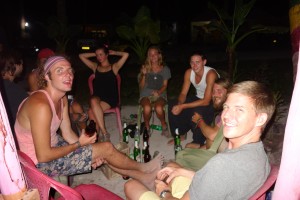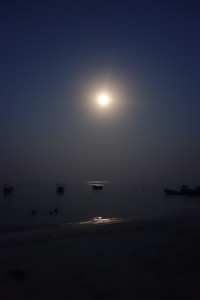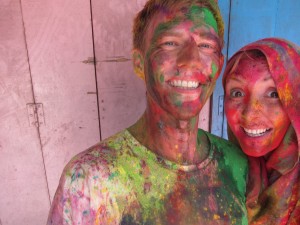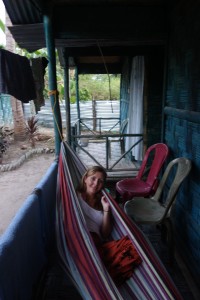Once, a hole-in-the-wall vendor was shaking his head at my request for ear-buds when I felt a tap on my leg. I looked down and a small girl was jabbing a finger at her head, saying “ear?” .”Yes…” I replied. “Come, come” she beckoned, and skipped off through the warren of narrow walkways, often only wide enough for 2 people abreast, occasionally turning and repeating “come, come.” Sure enough, she found me a shop that sold ear-buds. I gave her a 10 rupee tip. From then on, whenever we were looking lost, this small girl would pop out from nowhere. “Come, come,” and off she’d skip. Our little Varanasi guardian angel. Cost me a bloody fortune.
It is easy to get lost in this most ancient of cities. Varanasi is built around it’s ghats, concrete steps and jetties that lead down to the Ganges. The area around the ghats is a confusion of nameless alleys, gaily painted with advertisements like Victorian London, thick with flies and incense, pebbledashed with cow pats, and often thronging with people. It took a few moments of staring at the river from the rooftop of our ghat-side guest house before we realised that this was the Ganges, the most holy of rivers, flowing from its source high on the Tibetan plateau to the Bay of Bengal where it opens up into the largest delta in the world.
Varanasi has a magic all of its own. A morbid, unsanitary magic, but a magic all the same. Often you’ll hear a rhythmic masculine (always men) chant floating down the alleyway from behind. This is a cue to step aside and watch as a procession of solemn men come bounding past carrying a corpse wrapped in bright yellow and red, on their way to the ghats to arrange a flaming pyre and float the body out onto the holy river.
Our last night in India was an emotional affair. We spent the last few hours being rowed along the Ganges in a skiff, watching the Indians at play on the ghats; bathing, swimming, splashing and, of course, playing cricket; watched as herds of buffalow came down to drink; saw the bodies being consumed in the perenially aflame ‘burning’ ghats. Eventually we joined a flotilla of skiffs and row-boats around the main ghat to watch a nightly ceremony so old that nobody knows how or when it started. We said barely a word to eachother, each lost in our own thoughts. We’d been living and breathing this country for the last three and a half months and couldn’t have planned for a more perfect and apposite ending.
More than a country, India is an experience. It hangs like a ripe fruit, dangling from the Himalayas, the embodiment of Asia. It exudes a kind of sweaty fecundity and smoky mysticism and the sheer weight of humanity, the dogs, cars, rickshaws, cows, elephants, camels has to be seen to be believed. Religion seeps into the everyday: Hindu luminosity, Muslim opulence, Buddhist austerity, Sikh openness, Catholic stateliness, and the result is a magic unlike anywhere on the planet. Thanks to the variagated landscape and the ghostly impressions of empires past it can feel at times like you’re in the Mediterranean, the Caribbean, Tibet, Marrakesh or England.
The people too; it should come as no shock to anybody whose lived in England in the last 50 years or so, but Indian people are wonderful. V.S. Naipul says that the Indian is the last true English gentleman, and its true. They have an exagerrated courteousness and a kind of misplaced chivalry (for instance Amy will often be offered a seat on a packed train, but not by the person occupying it!). Everyone is an entrepneur, and will cheerfully rip you off for whatever they can. This is a downside. Even when caught red-handed, they don’t have the grace to look abashed, you’ll just get one of those damned infectious ambiguous head-wobbles (does it mean yes or does it mean no?) But on the other hand we’ve never felt threatened and have heard no tales of anyone having anything stolen.
In Varanasi I saw 2 children playing, a boy and a girl. They were tussling and laughing, the boy trying to escape the clutches of the little girl. A passing dog provided a distraction and he made good his escape, running off up the alley. The girl set off after him but as she gave chase I noticed she had ricketts and waddled off with a bow-legged gait. Therein lies the tragedy of India. A country with one of the largest economies in the world, some of the most expensive real estate on the planet and a $1.3 billion space program, yet they have no sanitation, no waste disposal, and still have kids running around with ricketts.
I could go on forever. You could write a book about India, and many have. So to sum up I’ll just say we are going to miss this filthy, fractious hell-hole very, very much.

